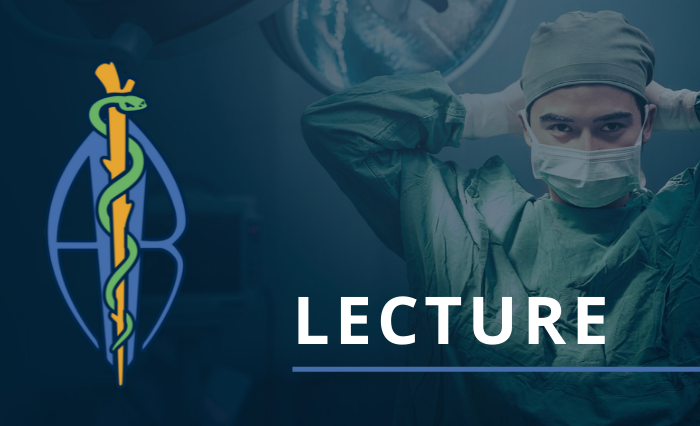Technical Insights for Cochlear Administration in the NHP
Christine Siebert2022-09-27T10:16:22-05:00Auditory related health conditions have warranted the development of new treatments and drugs including, for example, gene therapy focusing on restoring the sensory receptors of the auditory and vestibular systems known as hair cells. However, accessing and treating the cochlea containing these hair cells offers a formidable surgical challenge. This presentation will introduce anatomical features, landmarks, and dosing techniques for the cochlea. Surgical hints are shared but also pitfalls that may be encountered when developing and performing these dosing procedures are also discussed.
Cerebral Oxygenation Monitoring in Rats Under Isoflurane Anesthesia
Christine Siebert2022-09-27T10:16:23-05:00Introduction: Although monitoring of vital signs in small lab animals is critical to successful anesthetic outcomes, reliable measurement of the vital signs is challenging due to their size. To this end, we are developing a miniaturized optical imaging device based on the Near Infrared Spectroscopy (NIRS) technique for noninvasive measurement of the brain and peripheral tissue oxygenation and perfusion. Our goal is to develop a device to support safe and reliable anesthesia monitoring in small lab animals to improve animal welfare, ensure successful outcomes, and create reproducible research, which will ultimately aide in better knowledge of the living systems to enhance [...]
Aseptic Surgery in Rodents; Fact or Fiction
Christine Siebert2022-09-27T10:16:23-05:00Surgery The surgical procedure is often referred to in terms of surgery, but it should be referred to as a surgical act that is made up of: patient preparation, equipment preparation, preparation of the surgeon, surgical procedure, post-operative care and follow-up Surgical asepsis any measure taken to reduce bacterial contamination at the surgical site, aiming to reduce postoperative infections. • Direct measures • Patient preparation: shaving, depilation, disinfection of the surgical site, sterile drapes, sterile envelope for instruments, continuity of the operating field, normothermia, hydration, analgesia • Equipment preparation: sterile, adapted, back up kit? • Preparation of the surgeon • Indirect [...]
Ameroid Band Constrictor-Induced Arterial Occlusion Simulates Peripheral Vascular Disease in a Porcine Model
Christine Siebert2022-09-27T10:16:24-05:00Introduction: Gradually tightening vascular occluders such as ameroid constrictors are used to model chronic ischemia and may recapitulate human ischemic disease pathophysiology and atherosclerotic plaque progression better than acute ligation. Ultrasonic power Doppler (US-PD) imaging uses Doppler sampling and filtering techniques that significantly increase the sensitivity and specificity of routine sonographic instruments for imaging spatially disorganized patterns of peripheral perfusion without contrast enhancement. Objective: To compare sensitivity of US-PD with dynamic contrast-enhanced magnetic resonance imaging (DCE-MRI) techniques for measuring endothelial function and determining vascular perfusion. Methods: Four 6-month-old, castrated male, Yucatan minipigs were operated. A~9 cm incision was made in the [...]
Coronary Sinus Dosing in Swine, Anatomical Considerations in Comparison to Human Anatomy
Christine Siebert2022-09-23T14:55:59-05:00Introduction: Routine cardiac catheterization for angioplasty and stenting has created a large population of patients with cardiac damage and subsequent long-term heart failure. Cardiac therapies are often administered directly to the heart by methods such as coronary sinus retrograde infusion. Understanding the differences in human and swine coronary sinus anatomy is crucial in preclinical safety studies, particularly for biodistribution evaluation. Contrast/ Dye studies aid in determining coronary sinus anatomy and catheter placement in the heart. Methods: Under general anesthesia, 9f or greater sheath was placed via jugular vein cutdown on three Landrace/ Duroc and two Yucatan swine. Using fluoroscopic guidance, a [...]
Liver Regeneration Model in Cynomolgus Monkeys
Christine Siebert2022-09-23T14:56:53-05:00Introduction: About 41,260 new cases (28,600 in men and 12,660 in women) over liver cancer will be diagnosed in 2022 according to the American Cancer Society website. A model resecting approximately 60% of the liver by weight in cynomolgus monkeys is valuable in evaluating potential therapies that encourage natural regrowth of the liver post resection in human patients. Methods: Spanning three separate studies, a laparotomy was performed on a total of 26 animals, resecting approximately 60% of the total liver volume (by weight) of each animal’s liver. Liver volume was calculated based on historical organ (liver) weights measured at necropsy, determined [...]
How to Prepare for A Model I Have Never Performed Before?
Christine Siebert2022-09-23T14:55:21-05:00I am frequently asked to develop and validate novel models. Sometimes, I am just asked to perform a specific model I have never done before. Both situations are stressful; the first because it has never been done before, the latter because it seems so easy in the provided paper… But we know that the most important details are NOT in the paper!!! When realizing a model, we have to make sure that all the animals are operated by the same person, in the same manner, in the same time: reproducibility and repeatability are the 2 most important attributes. So, we have to be well prepared; the learning curve has to be behind us…
Baseline Hemodynamics Including Aortic and Pulmonary Blood Flow in a Chronic Bovine Model
Christine Siebert2022-09-23T14:44:57-05:00The use of large animal models in preclinical studies has provided invaluable data for evaluating the safety and efficacy of new therapies and devices and has facilitated the development and clinical application of cardiovascular innovations. With an increasingly valuable role, the implementation of large animal models has expanded, serving to bridge the translation of physiologic and economic aspects of animal research to the successful treatment of human heart failure. In this study, we report normal hemodynamic values, including aortic and pulmonary blood flow, in a bovine model at rest and during exercise after a control procedure.


